-
Posts
1,673 -
Joined
-
Last visited
-
Days Won
38
Content Type
Profiles
Forums
Events
Posts posted by Syzygies
-
-
@braindoc brass is also nice. While you're allowing yourself temptations...
-
 1
1
-
-
20 hours ago, David Chang said:
i passed at the opportunity to buy copperware for cheap at place seffarine in fes.
Here's my pan getting tinned there in 2018:
-
Ok, here's some serious trivia for the really old timers here: I gave away my copper cookware to "Kim" of "David and Kim", whom I met at a 2003 Kamado cookoff in Sacramento.
My french cooking teacher had many copper pots. I mainly winced at the hours spent polishing, but hey, he was in the trade and cooking is part theater. He died a year ago but his web site lives on; yes that's Anthony Edwards the actor in the classes photo. He sold all his copper to help fund his retirement; I visited him regularly in rural PA for good food and conversations:
In my experience copper does conduct better but the properties of the cooking surface dominate. My favorite pans are actually carbon steel with the heft of cast iron:
though this is a burgeoning category since I bought three, and other brands have a more practical shape now.
After falling in love with Dominique Crenn through her memoir, I noticed that her restaurant is brimming with Mauviel stainless steel pans. A practical choice, easier to care for than copper but functionally rather similar in use. I now have a few Mauviel pans which I love. My favorite is a 6.3" curved splayed saute pan with lid (for making sauces or any equivalent activity such as the tempering step in Indian cooking) that doesn't show anymore on the US web site:
-
 1
1
-
 1
1
-
-
On 9/9/2022 at 10:29 AM, tony b said:
@tekobo - you are correct. I was just trying to simplify the description. I will NEVER try to make it myself. Sorry.
Oh, but you could.
I bought this for natto; I have the correct soybeans and a Musui Kamado I will use as a fermentation chamber. And the miso section looks interesting.
I travel too much for many of the Japanese ferments. They require regular attention.
-
 2
2
-
-
Breeo is definitely a credible option.
My favorite, never-look-back grilling option is a Solo Stove Ranger, on a Harbor Freight cart modified to hold a Breeo adjustable grill. I think I prefer Solo Stove to Breeo for the pit itself, but I'm not sure why.
There's a long thread on the Solo Stove; various of us have one (or more): Solo Stove (KK forum).
This is the bastard child of a Weber and an air fryer. Once you get used to the geometry, there's no going back; it just makes sense if you can get past habit. Chicken thighs on double skewers, burgers on a perforated plate, ... My most frequent use is actually grilling vegetables for salsa for tacos.
I can light it in a couple of minutes while juggling various other kitchen tasks, and time pretty well when I can come back to grill. I'll put in a layer of wood chunks, then a layer of lump charcoal, then pour in a bit of isopropyl alcohol. Light one of those long matches, play with it to get several inches going as if you're just toying with the fire pit, it should know what's coming. Throw in the match, WHOMP, enjoy the neighborhood dogs barking. Go back in to prepare the rest of the meal.
(Harbor Freight is a US chain, a bit of an inside joke as one either deliberately shops there, or deliberately doesn't, depending on the application. It's for a very specific quality level, when no other quality level will do!)
-
 2
2
-
-
I've started to appreciate why Dennis is reluctant to recommend the gas burner assembly. There is a workable solution for high temperature cooks such as pizza or roast chicken: Use charcoal that comes in bigger chunks.
FOGO SUPER PREMIUM LUMP CHARCOAL (35LBS)
QuoteDesigned specifically for low and slow cooking this was the first large-piece-only lump charcoal. Every hand-picked piece of lump charcoal in the bag is over 4 inches long.
The gas burner assembly lights charcoal from the bottom. What tends to happen is that all surfaces light at once, the fire gets way too hot, then the fuel is spent too soon. In principle one can control any situation like this through airflow alone. In practice, this is hard to do.
Large pieces of lump charcoal improve the surface area to volume ratio. The fire doesn't get as hot, and it lasts longer.
The fire shown easily stabilized near 500 F for long enough to thoroughly heat an indirect pizza stone, then cook several pizzas, with no rush to chase a fire about to collapse. I'd use a bit more charcoal next time, to stabilize instead near 600 F. In any case, I'm now happy with the gas burner assembly for purposes such as this, after thinking I might not use it much.
Despite this charcoal being marketed for low and slow cooking, one might want to try it for hot cooks even without the gas burner assembly. One gets a nice fire, better airflow, longer lasting, all around easier to manage than smaller pieces of lump.
-
 2
2
-
-
My other favorite part of this upgraded stone holder is better yield. The corn is inexpensive; I'm perfectly capable of accepting waste rather than fussing over scraping ever last bit of masa out of the original stone assembly. Nevertheless, masa is religious food. Just as the synthesis of ammonia and thus nitrogen fertilizer a century ago is the reason half of the 8 billion people on this planet are even alive, the invention of masa extended life expectancies in this hemisphere by a decade. People used to die when their teeth wore out. I'm spiritual but not particularly organized-religious. It just doesn't seem right to waste food in this particular instance.
The new assembly comes apart completely, as shown, It is simply not frustrating to achieve a high yield, minimal waste.
-
 3
3
-
-
Ok, it pains me to say this, but I can't tell the difference, using the Melangers after-market stone assembly in my original Premier wet grinder compared to the upgrade model chocolate refiner. The stone assembly makes the difference; it's pure genius in any grinder in this series.
To be clear, these two grinders are virtually identical, both made in India by Premier. The chocolate refiner is said to have a better drive train, perhaps the same motor. Call Melangers if you want them to explain the details:
Premier Small Wonder Table Top Wet Grinder 1.5 Liter ,110 volts by SS Premier ($220)
PREMIER CHOCOLATE REFINER - 8LBS ($300)
Melangers has designed an upgraded stone holder, that mixes thicker mixtures like chocolate, nut butters, or masa more effectively. They sell it combined with the chocolate refiner, or separately:
PREMIER CHOCOLATE REFINER 8 LBS WITH STAINLESS STEEL STONE HOLDER ($400)
NEW STAINLESS STEEL STONE HOLDER - SMALL ($125)
I was concerned that the base model wouldn't have enough torque to drive this mechanism, but I can't tell the difference. Perhaps I could wear out the base model motor sooner, but that seems unlikely. The chocolate refiner is better for nonstop use, but that's not our application.
I'd urge anyone who now owns this Premier wet grinder to upgrade to this stone holder. (I'm happy to bounce one to @tekobo if that simplifies shipping to the UK). While one could grind a masa that needs no masa harina to dry it back out, the real goal here is to do a better job of grinding the nixtamal, with far less intervention. One should choose how much water to add to reduce tending to a couple of visits over 40 minutes (which is now more than needed), then add a couple of spoonfuls of masa harina to stiffen the mixture while the grinder is still running. Pull out a sample, dust it with a bit of masa harina, and roll it into a ball to see if the mixture looks right.
Were I starting out from scratch, I'd just buy the upgraded model from Melangers. It's net a $60 difference, and the drive train might make a difference over time. More significantly, food is part theatre. Many people who can afford high end restaurants can't actually appreciate the food to the degree the chefs can, so these places learn how to signal one is getting an exceptional experience. Betty Crocker couldn't sell cake mix till it let consumers add an egg. "Chocolate refiner" is the egg here; you've gone beyond the standard advice to use a wet grinder, because your guests really are that special.
-
8 hours ago, Cheesehead_Griller said:
Now, if I could just find someone to do a bulk purchase with me.......
It's a misconception that you have to order enough for a small town to get a break on shipping. Try various quantities for yourself, estimate shipping, and make a compromise. Then allow a short grace period for others to join if they like.
I've joined in shares, and enjoyed meeting people that way. I've also ordered for myself with no regrets.
The pain of spending is forgotten quickly, but the joy of having lasts. I hoard charcoal, and it's nice to have enough to just use what's appropriate for each application, without even thinking.
-
 2
2
-
-
I've read about this. Not all chamber machines are capable of handling retort bags, I thought. In particular, mine.
On a different note, I learned recently that one can ferment chiles for hot sauce in a vacuum chamber bag. I am definitely trying this in the Fall; my hot sauce is in demand, but carboys are a pain. I happen to have some bags that are too big for my machine; they'll clearly handle a ferment without blowing up.
-
27 minutes ago, jeffshoaf said:
I believe the indicated "spare" part is a gas orifice. Maybe to convert to natural gas?
Oh it is a gas orifice. Except it doesn't fit anywhere as a replacement for what we use, and the hole is identical to the gas orifice in the assembly. This information cost me 15 minutes, as disassembling and reassembling the gas burner is nontrivial; an ordinary wrench doesn't fit, and the assembly likes to be tight when you're done. But I don't mind; I still berate myself for not having Richard Feynman's childhood taking everything apart, and I'm making up for lost time.
I stand by my original theory: It came out of the component Dennis bought to make this, and he hates to throw anything out someone might later be able to use.
-
I ordered the gas burner assembly recently, for lighting high temperature cooks. My initial tests are positive.
- As it lights charcoal from the bottom, one uses more charcoal. On the other hand, if your goal is to light all the charcoal, to avoid off flavors as charcoal lights, I don't see this as a bad thing. I feel important when I order more Fogo, and that feeling doesn't come easily to me.
- It comes with a tiny part (circled in red) that is similar to a custom part installed in the assembly. I can't identify its purpose, though I don't want to misplace it then realize its purpose. My best guess is that this assembly is constructed from some off-the-shelf components, and Dennis can't bear to close doors by discarding a component he didn't need.
- It comes with a support, that the second picture makes clear is unnecessary. I suppose I could bend it to get into the action, but for now I won't use it.
- It's pretty awesome that one can refill empty 1 lb tanks off a big tank using an adapter. I put this to good use right away, using my weed burner to light the gas burner assembly from a safe distance.
- The previous picture is to remind me where I put the adapter.
- One wants a regulator to control propane flow. If you're experimental as I am, make sure the KK is getting enough oxygen before cranking up the regulator. One could make a bomb. I heard a womp, but my KK is intact.
- It smells, though I imagine it will burn off. And it's not clear I need to remove after in use, at least while I'm hoping the smell goes away.
-
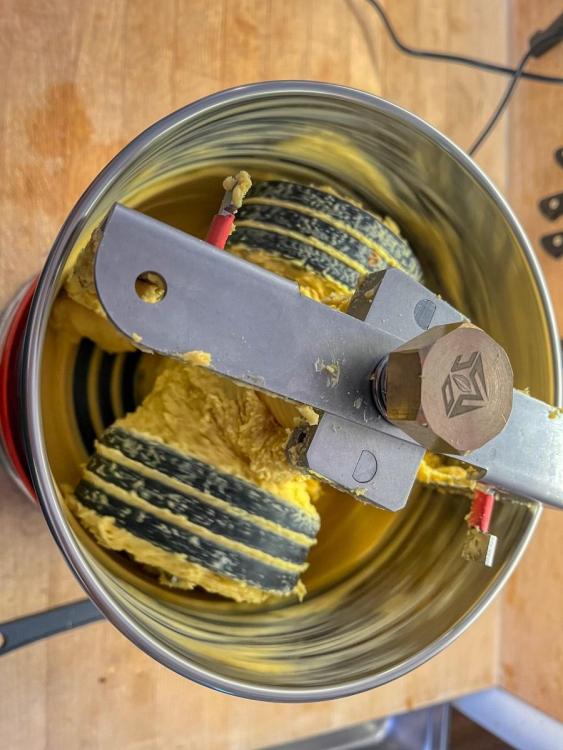
Ok, we're thoroughly blown away by the upgraded wet grinder, intended for chocolate refining. I've never handled masa this smooth, and I didn't need to add masa harina to a too-wet mixture. The grinder handled masa as advertised, as if it were a nut butter.
I can't say this is unattended, just less frustrating. I poked at it in fascination, to encourage better mixing. After years of daydreaming about a better stirring mechanism, I've discovered that someone with a harder problem designed one. I can't explain (yet) this success. The motor? The stirring? Better tension control?
My next experiment will be to try this roller hardware in my old wet grinder, to see if that motor is fine driving this upgrade. They sell an upgrade kit...
When I bought my first food processor, as a grad student in 1980, I made various dubious experiments. One was to beat an egg for ten minutes, before making an omelet. The completely denatured result looked like a piece of wet suit, not exactly the ideal omelet. One could wonder the same thing here: Just as some believe one can rinse nixtamal too thoroughly (residual cal is thought to help the tortilla), one can perhaps mill masa too smoothly. This has never however been the question at home: People will try any available tool such as a VitaPrep, fix the too-wet results by working in masa harina, and declare a partial success. These proclamations of partial success are more a testament to one's psychological health than a testament to the merits of a method. Now, too smooth masa is within reach. Consider the needs of chocolate; they're beyond the needs of masa.
It would be a logical error to assume that hand grinding nixtamal on a metate stone is superior to any modern method. Still, one needs to recognize that expediency plays a role in modern equipment. I have a hard time believing that any equipment that passes nixtamal briefly through spinning stones can possibly be the equal of a long metate session (surely people were at least as obsessive centuries ago), which this duplicates. In any case, the major expense here is the time.
To be continued...
-
 3
3
-
 1
1
-
-
When I returned to teaching mid-pandemic, I bought a $250 CO2 meter to test my classrooms; people exhale CO2 so these levels are a good proxy for COVID exposure risk. Research predating COVID shows transmission of airborne infectious diseases is virtually eliminated if one can exchange indoor air to outdoor CO2 levels. The Brits learned a parallel lesson in the 1800's after several Cholera epidemics: Don't drink sewage water. Are we making a similar investment in indoor space ventilation, using heat exchangers to make outdoor air quality the indoor standard in all public spaces? No. We breathe the equivalent of sewage water, and accept common colds and now COVID as an unavoidable fact of life. Yes, we're that stupid.
There must be a similar meter that shows levels of CO. You don't just want an alarm, you want to measure your risk. CO is a byproduct of incomplete combustion, and bincho charcoal does burn more cleanly than alternatives. I've sat by live bincho fires in Japanese izakaya, and I've had live charcoal fires at my table in Korean BBQ restaurants, but I don't understand the risk.
Modernity is novel, which leads to mistakes. One is tempted to try things without twenty generations of experience, "Did my ancestors die doing this?" My favorite example is Alaskan natives who for generations fermented seal meat in seal skins, till someone had the bright idea "Why not just use a plastic pail?" Botulism is why not. Closer to home, one shouldn't use galvanized metals in a BBQ cooker. Who knew? One can't possibly know everything like this, so the fallback is to always be keenly aware of precedent.
There is precedent for burning bincho charcoal indoors, but I don't have ancestral wisdom here, and even that can be wrong. So I'd want a good meter. I get laughed out of fermentation forums for testing my hot sauce ferments with a pH meter, but who cares! We're talking $100.
-
 1
1
-
-
My favorite kind of problem solving is to figure out who has a similar but harder problem, and to appropriate their solution.
For my most recent batch of masa, I recognized that my basic wet grinder is tuned for wet dosa and idli batter, so I ground masa that wet, drying it later in my convection oven's dehydrate cycle. It was wonderful being able to run the wet grinder unattended. However, the skins formed drying the masa never dissolved away while kneading, and I still ended up adding masa harina, in fact overcorrecting. The second night I mixed back in some water, for more tender tortillas.
Huh! @tekobo and I keep debating by messages whether to buy Masienda's Molinito. I finally saw one at an artisanal Mexican restaurant in Oakland, CA. It isn't that big, though I worry about cleanup. The ladies in the kitchen were fascinated by my interest, marveling that I made masa for friends but didn't own a restaurant. Back at my table, there was unanimous agreement that my tortillas were better, clearly same Masienda corn. Two possible explanations: It could be that the original metate is indeed the best way to grind nixtamal, and one pass through even a state-of-the-art spinning mill is no match for careful use of a wet grinder? Or I now recognize, they make their masa too dry. One ends up with the tortilla equivalent to hippy bread: It screams artisanal for those who might otherwise miss it, but is far from delicate. I can see this choice being one of convenience in a busy Mexican restaurant kitchen, just like the pervasive choice to undercook tortillas by my tastes: They need to get product out. Just as North Carolina BBQ joints have managed to convince customers that ropey, overcooked pulled pork is the breed standard, taco joints have managed to condition their customers to accept undercooked tortillas. Easy to work with masa, same story? My most delicate tortillas from wetter masa are more challenging to transfer from the press to the griddle.
So perhaps the Molinito is a suitable solution, and the differences are all in execution.
I went down a rabbit hole after reading some vendor responses on my wet grinder: The basic model is less suitable for nut butters. They make a higher end model for chocolate refining.
Chocolate refining is hard. Ding! Ding! Ding!
Diamond Custom Machines has a division Melangers dedicated to chocolate refiners. They answer their phones, if you want to discuss any of this with them. They surmise that these machines would also excel at masa; they're tuned for more viscous mixtures. They import their home models from India, made by the wet grinder manufacturer Premier. They upgrade their top home model with their own stainless steel retrofit, swapping out plastic parts for better tension control and stirring. This model has a better motor drive system than the basic wet grinder, and can be left running all day, as chocolate can require.
The basic geometry, stone wheels and container, is identical to the base model I own. Perhaps masa will still need tending. I do keep staring at the stirring system, wondering if I could improve it for masa, and perhaps they have. Certainly a better motor drive, stirring system, and tension control, could help.
I took one for the team and ordered one. I'll report back. I'll either move the basic wet grinder to my New York kitchen, or rehome it to someone just starting out.
-
 4
4
-
-
-
On 6/25/2022 at 2:28 PM, braindoc said:
I’m leaning towards the Magic Vac for sentimental reasons - we are Italophiles. Eleven trips to Italy starting with our 2007 honeymoon, plus 2 and a half academic years there for me a few decades before that.
Can't remember the brand offhand, but I've also spent most of a year total in Italy, much of it various summers on islands off of Sicily. Italian and Japanese are my two best languages and favorite destinations. My last external clamp machine was an Italian brand, much higher quality than a FoodSaver. Never looking back after going to chamber (get a small one?) but it was a good purchase.
Heads up for a new category of chamber machine use: Hydrating doughs, more generally speeding up long processes with a few minutes of vacuum. This is a vast generalization of the idea of vacuum marinades, any situation where popping microscopic air pockets could help. Pasta dough is different, one needs to adjust but might prefer the effect. Tonight we made Chinese dumplings, and after I salted the minced cabbage I exposed it to several minutes of vacuum. Then wringing in a cooking towel, the process released a stunning amount of liquid.
-
 2
2
-
-
7 hours ago, Cheesehead_Griller said:
Which chamber vac do you have? I'm looking at the JVR Vac100.
I have the Vacmaster VP120 in two locations. Not an oil pump, and chosen so I could lift it alone. I've certainly gotten my money's worth out of each one and the chest freezers they feed. Freezing great ingredients is central to how we've come to think about cooking, and sous vide is often a useful step. For example, nothing beats the freshest wild salmon cooked sous vide to 120 F. The trouble with fancy cooking is that some people think they're geniuses, when even the collective intelligence of an entire culture can't always improve on mother nature.
I'd get an oil pump now, and the JVR Vac100 looks like a nice choice to me.
-
 1
1
-
-
On 6/16/2022 at 7:41 AM, jeffshoaf said:
Avid Armor just announced a new chamber machine with an oil pump. Made in Netherlands; I haven't looked into it but since it's European, I wonder if it's just a rebranded machine from another manufacturer.
https://avidarmor.com/new-avid-armor-chamber-vacuum-sealer-euro-series-es41-oil-pump-machine/
I'm not aware of a machine of those dimensions that weights that little (52.35 lbs, one person could lift it). Looks nice.
Ignore their bundles. Friends don't let friends buy 3 mil bags. VacMaster for example makes a wide assortment of 4 mil bags. I own 6" x {8", 10", 12"} to minimize plastic waste and save effort; with the help of friends we're on second boxes of each of these. 8" x 10" is also useful, as is 10" x 12" and 10" x 18". My machines won't take 12" wide, and 18" is too long, I should have bought 10" x 16". Go big once your machine arrives, and you can measure first-hand what's possible. Like curtains, there's slack in the path. Insert a bag fully into the clamp past the seal bar, and measure how much more length is possible at the other end, to determine the maximum practical bag length.
Even coarse salt (e.g. Cantabrian anchovies) can pierce a 3 mil bag. A 4 mil bag will often tolerate bones. To be sure, cut open another bag to improvise those bone guards they sell separately. This is a great use for the 3 mil bags that come with a machine.
-
 1
1
-
-
-
On 6/7/2022 at 7:44 AM, David Chang said:
might as well take these as far as i can since vanilla is so expensive..
Ahh, obsession.
I heartily believe in making everything once, as tribute, and I've made vanilla extract.
@tekobo and I make our own masa for tortillas, because it's better than we can buy. I grind my own flour for sourdough bread, because I like my bread better than what I can buy.
I'm obsessed with tomatoes; I spent weeks in design experiments building this tomato dehydrator to make partially dried freezer packets of garden tomatoes 60 lbs at a time, and Sicilian estrattu from Santa Cruz dry farmed Early Girl tomatoes, in my opinion better than the tomatoes they use in Sicily.
After my favorite hot sauce source in Louisiana retired, I learned to ferment hot sauce.
I don't make beer, though arguably the best beer I've tasted was made in a neighbor's garage. I'm friends with one of the owners of MoreBeer, and there are people in our neighborhood who've spent more on their brewing rigs than I've spent on cars.
I don't make wine. I know my limits, and I like good wine. I romanticize the #@$# out of making one's own wine, but not enough to drink it. When I lived in Nice once, there was a place that filled and refilled liter wine bottles. I believed I was in the French version of heaven, till I tasted their wine.
I've been gifted batches of homemade wine that makes excellent vinegar in these vinegar barrels.
Vanilla extract? I'd love to be wrong here, and I wish you all the success possible. The best commercial sources are using methods not available to us. I categorize this with wine.
I've read about experiments using an Ultrasonic Homogenizer. There's this famous chef who uses it to clean his brass pasta dies. It's out of our price range, but if we had one we'd probably use it for everything. I bet it would make great vanilla extract.
-
 2
2
-
-
On 4/16/2022 at 8:38 AM, jeffshoaf said:
I understand the difference between the dry and oil pumps and know the oil pump is more better, but have any of you actually had a dry pump fail?
Not everyone has internalized into muscle memory how water boils at low pressures. If none of us have had a dry pump fail, it's because we realize that fouling the dry pump loses the machine, or at least requires extraordinary shipping fees to repair. When your box arrives look up what it would cost you to ship it back. Vendors negotiate better rates.
When one fouls an oil pump, one changes the oil.
There are many expressions of satisfaction with every level of machine, in the various posts above. One way to read this is that you can train yourself to be happy with a purchase at every level. I don't drive a $200K car, and I'm happy with my car. Another way to read this is that every responder is in good psychological health, but most don't make comparisons from personal experience.
I went through many Foodsaver machines, then a couple of very high end clamp machines, and I now own two Vacmaster dry pump chamber machines and two $50 impulse sealers. I seal liquids "freehand" using the impulse sealers (practice on chamber bags of water) and everything else using the chamber machines.
I simply cannot conceive of going backwards, the quality of a chamber machine seal is so superior. This isn't "this rich person's stereo sounds better than mine", this is how sealing is supposed to work, everything else is a poor imitation. In transition I'd find those textured Foodsaver bags in our chest freezer, and I wanted to discard them from unconscious revulsion. If the contents weren't too old, I'd instead repackage them. Chamber sealed bags last longer in the freezer. I can't explain it, but it's obvious when you see it. (Get 4 mil bags, not 3 mil, and protect against bone spurs with scraps of bags or the official pieces of plastic they sell.)
The oil pumps achieve a stronger vacuum, that's why I want one next. Any chamber machine achieves a worse vacuum when cold (think space shuttle o-ring failure). We keep ours in an unheated room; I finally learned that one of those food service infrared lamps used to warm french fries can serve to heat our chamber machine before winter use. Just don't use the heat lamp with the lid up: there's a square law at play. I could post a picture that would render it unnecessary to explain the math.
-
8 hours ago, Cheesehead_Griller said:
I think I'm going to go with the Vacmaster P210. Anyone else have experience with the Vacmaster chamber vac?
I have two simpler Vacmaster machines in two locations. I held off on an oil pump because of weight, and the oil pump. Were I doing it over I'd get the oil pump, such as the VP215, and have a friend help me lift it.
Chamber machines are indispensable, I can't imagine going back. In each location friends also rely on my machine. For example, here in California my neighbor drives to buy us each whole salmon from the fisherman. Once he parses his up into servings, I vacuum pack for him to return the favor for the drive.
-
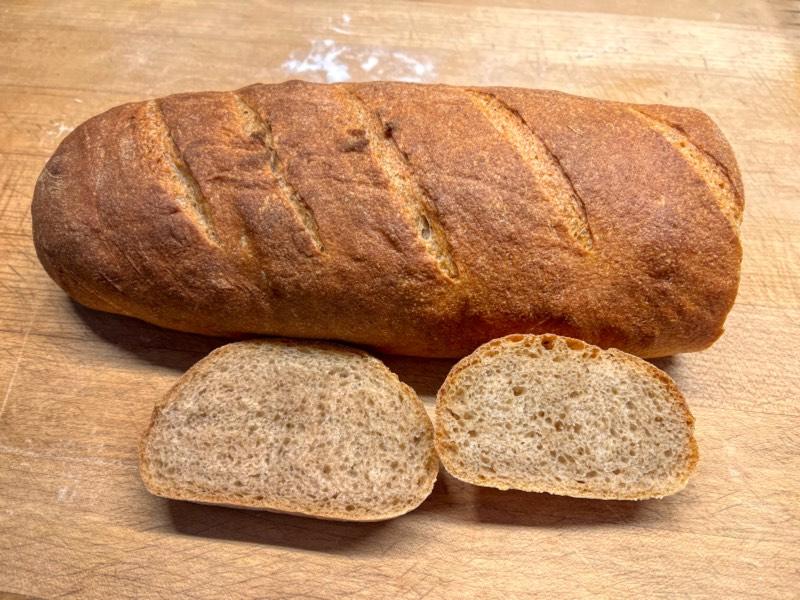
A couple of days near 100 F here in California. Nice to be able to bake bread outside in the KK.
-
 7
7
-



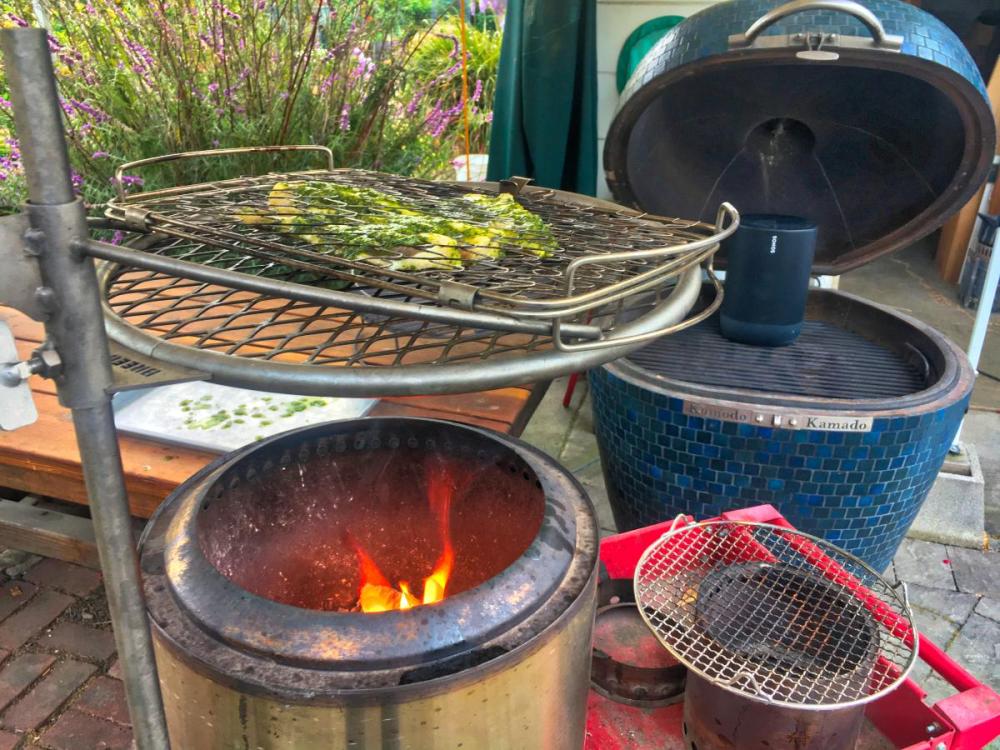
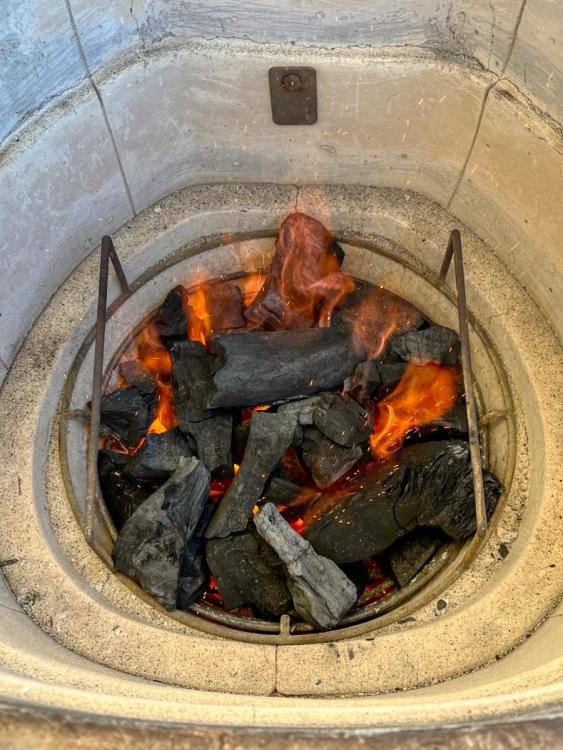
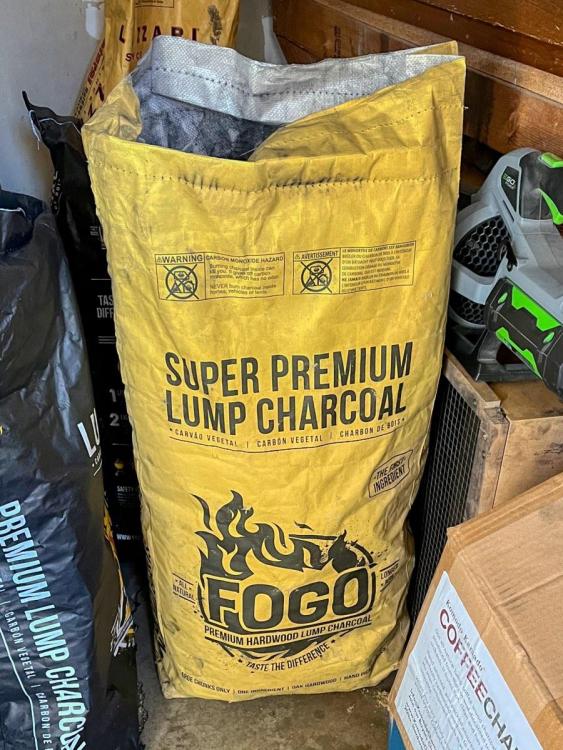
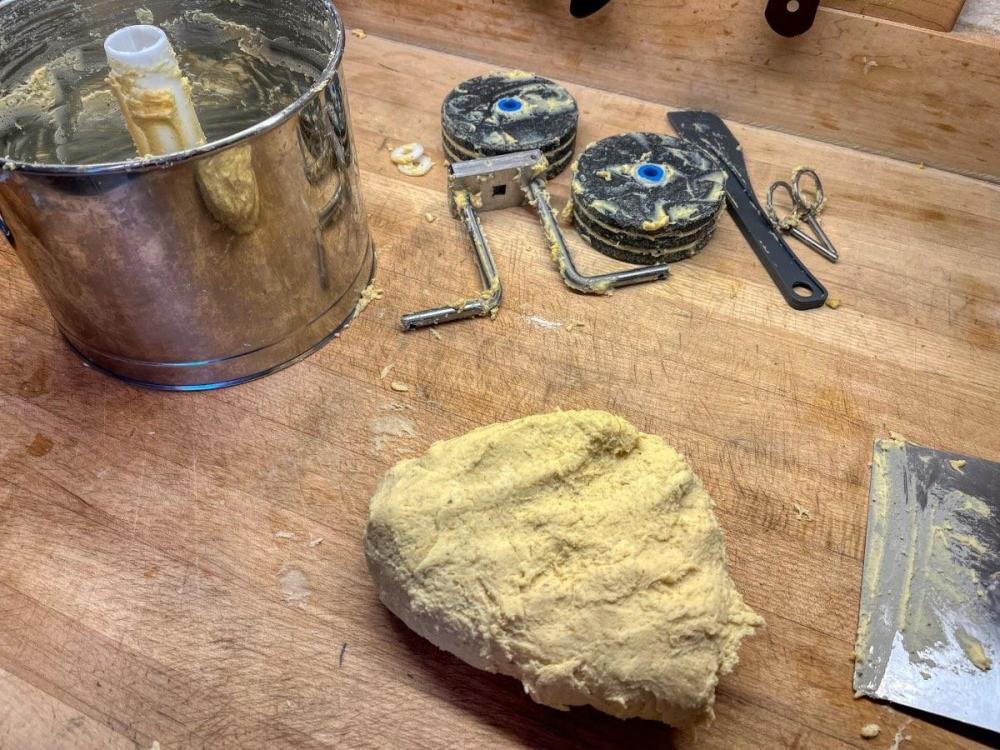
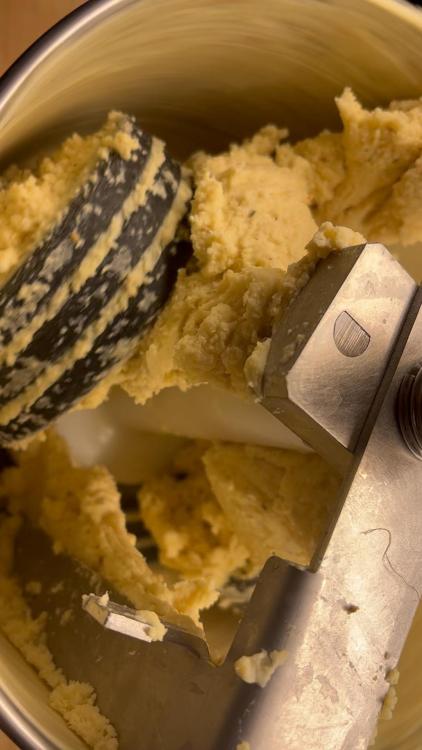
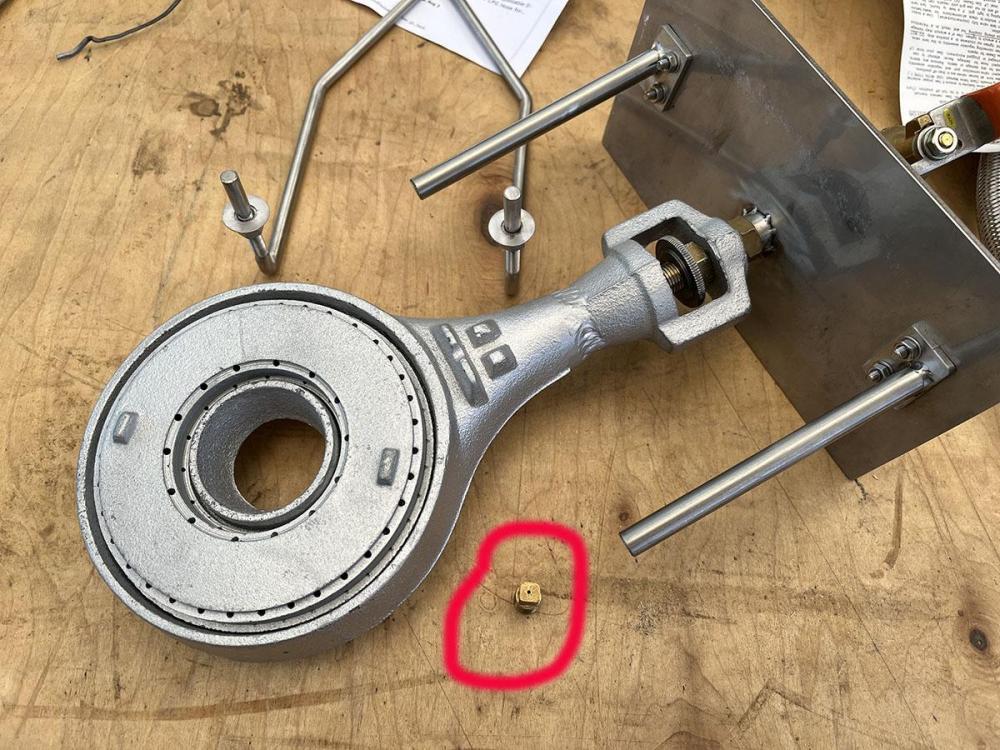
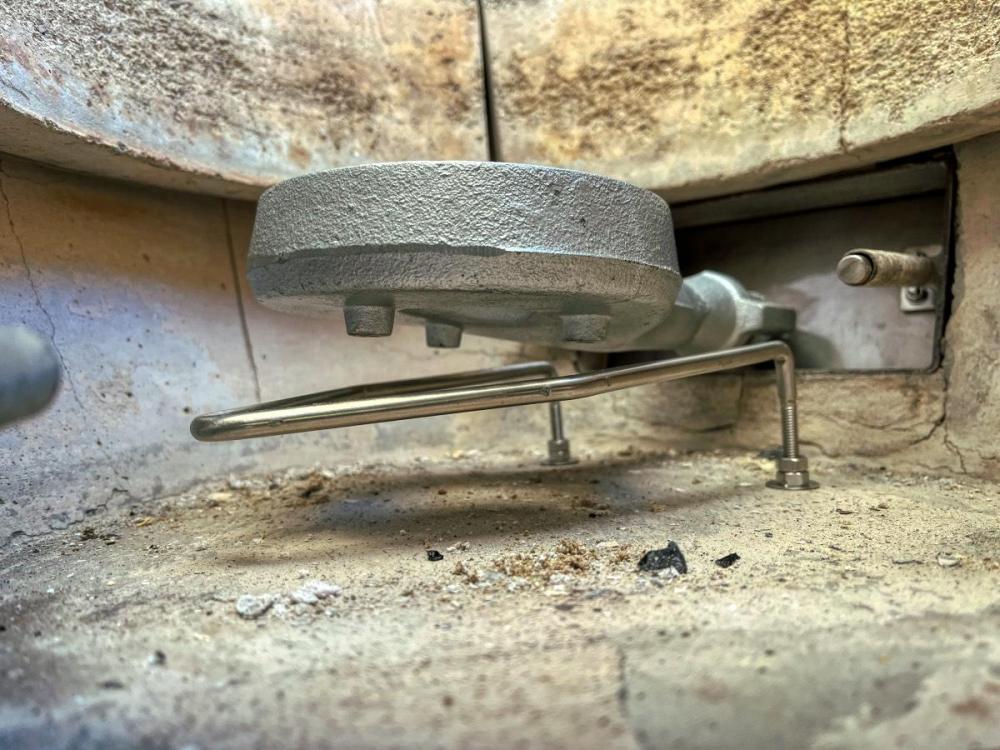

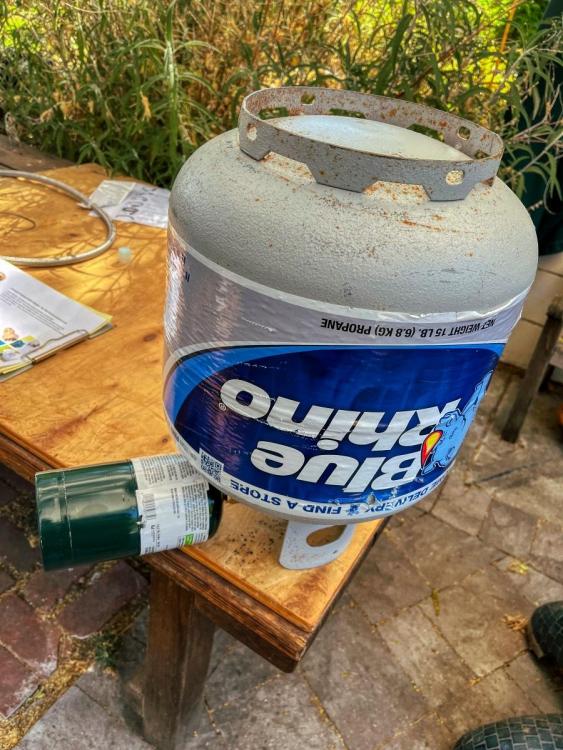
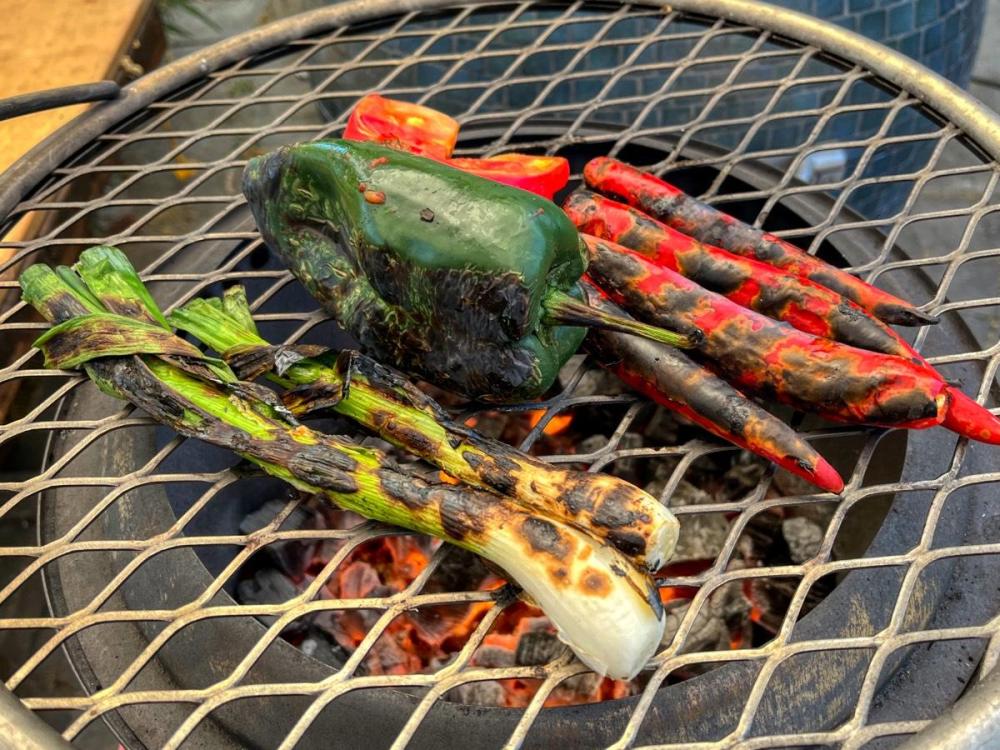
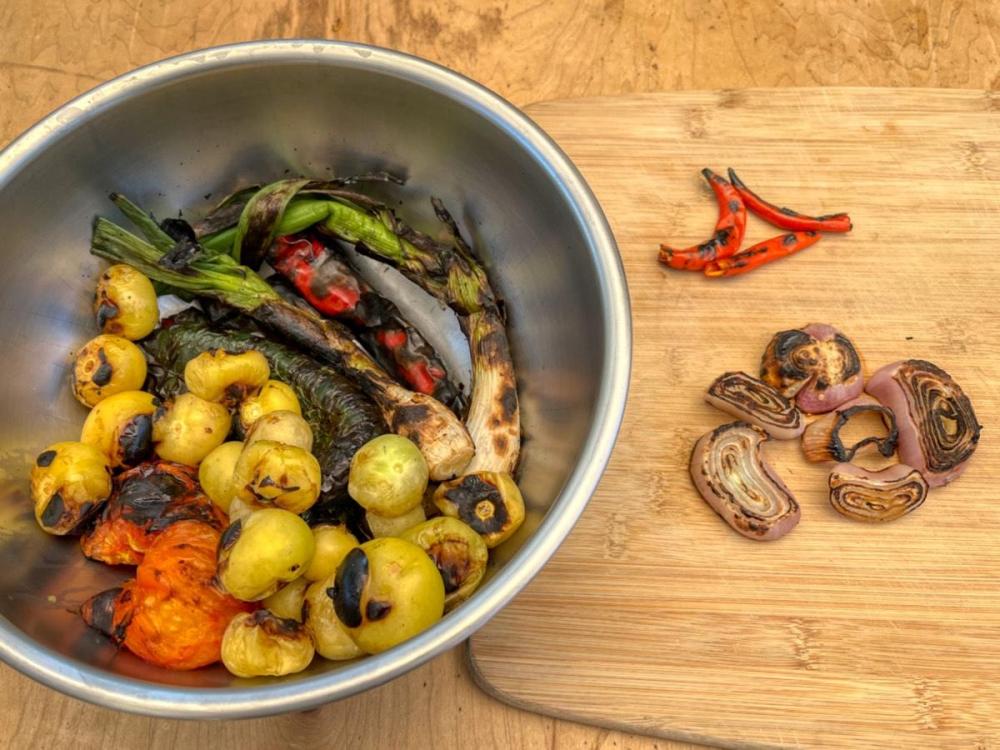
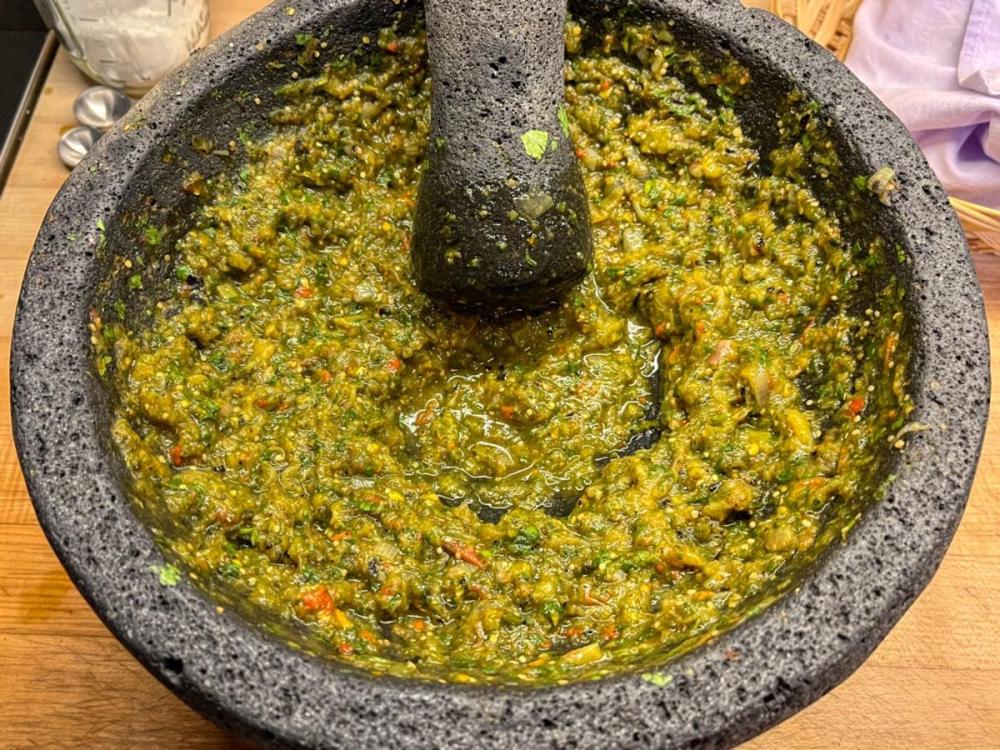
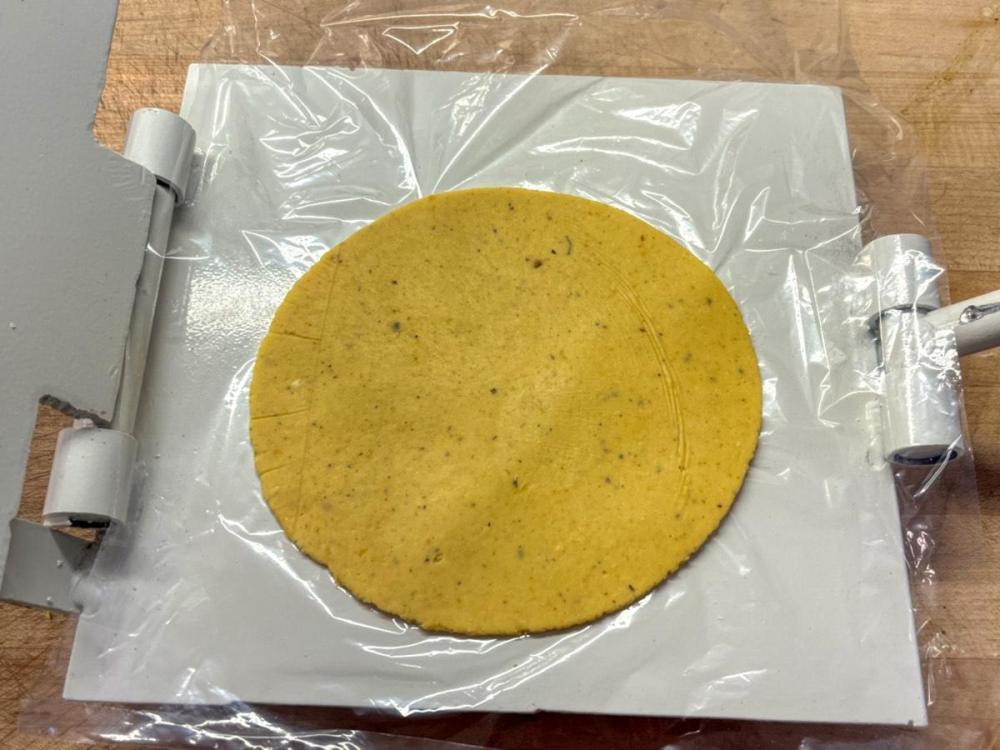

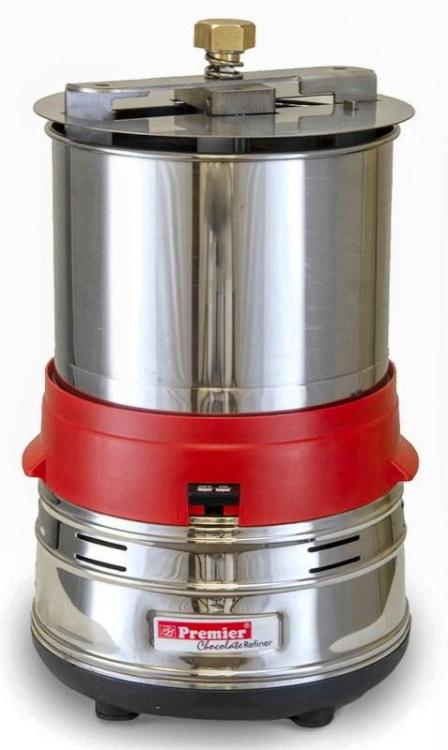
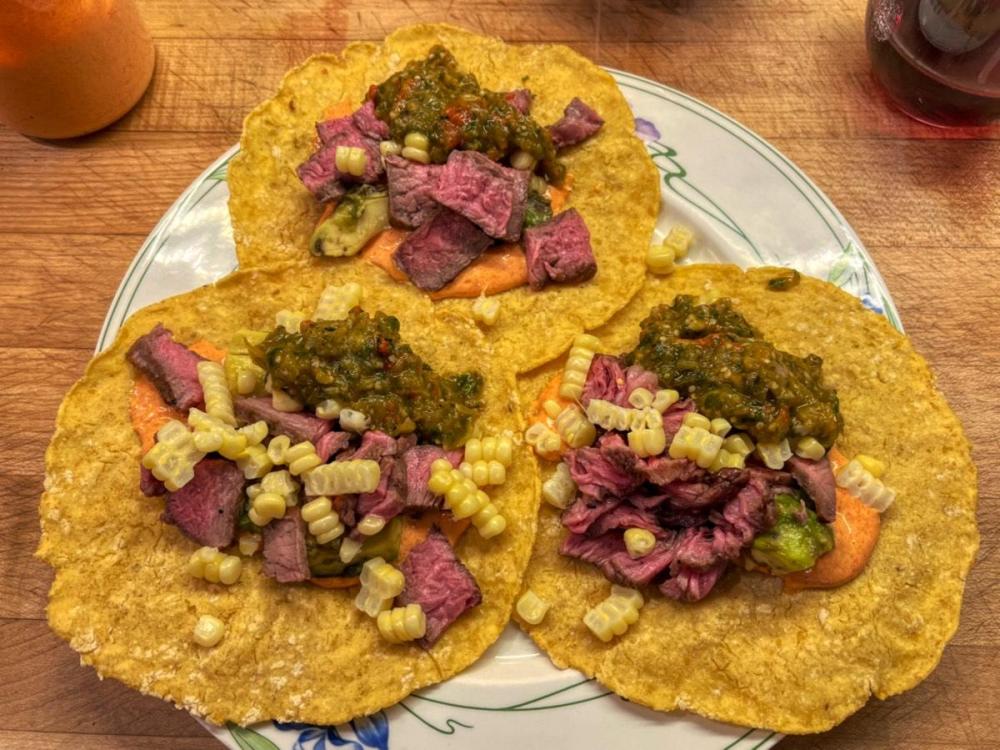
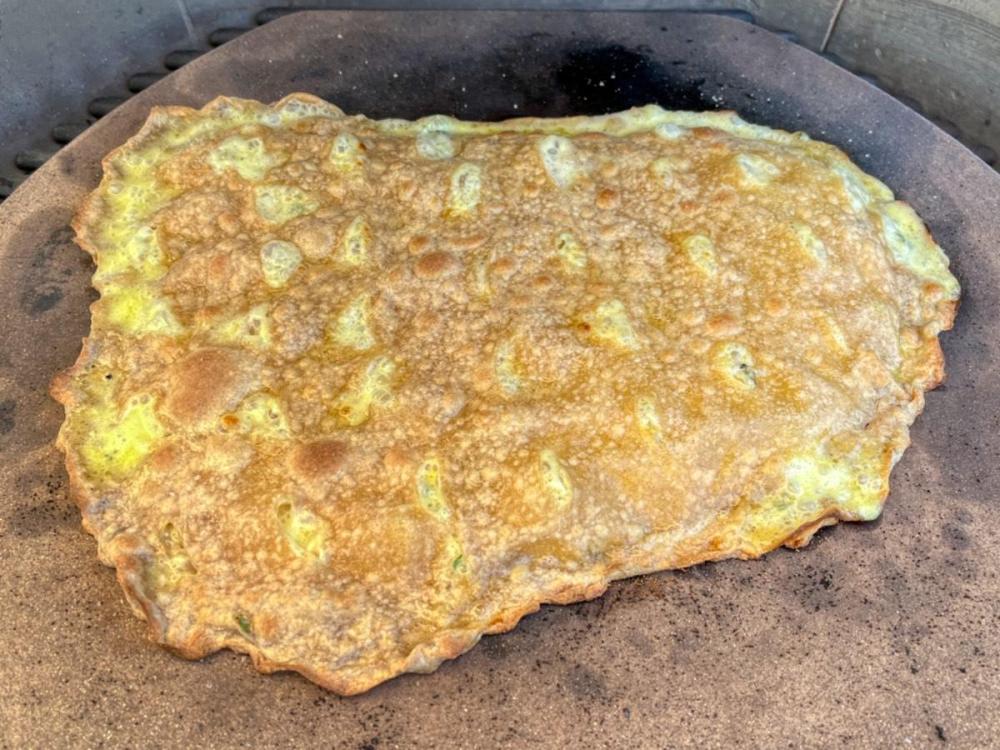
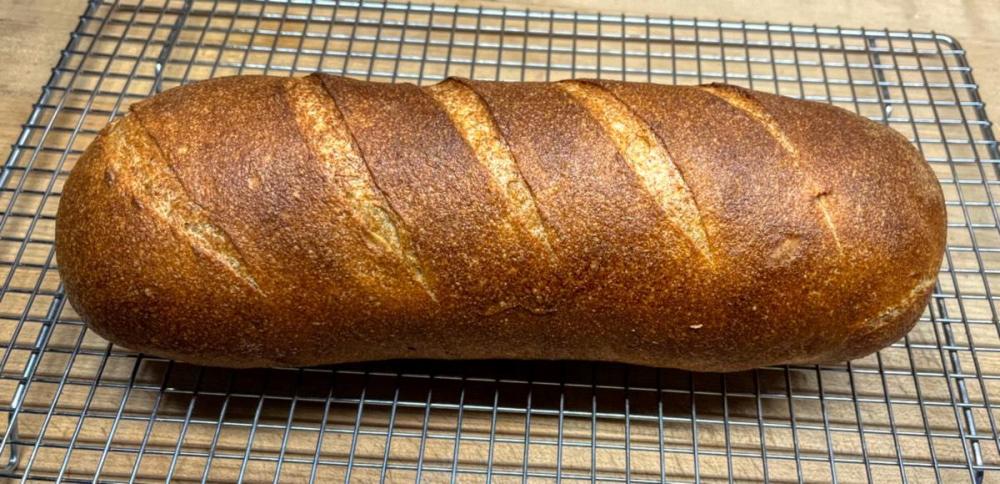
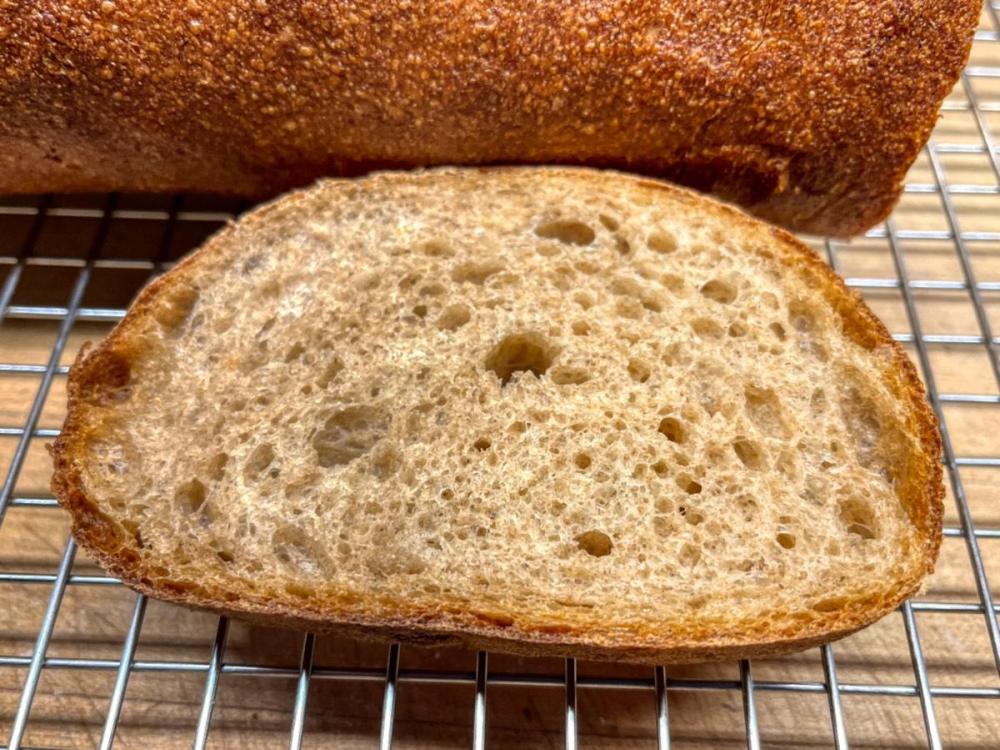
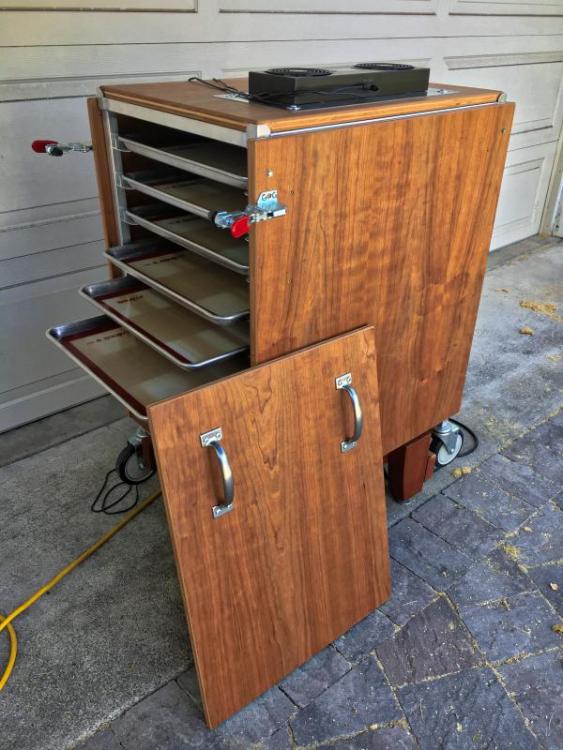
Dry Aging at Home
in Techniques
Posted · Edited by Syzygies
I have indeed made vinegar for decades. I've found red wine vinegar to be easy, and white wine or dessert wine to be inexplicably challenging. I've nevertheless found interesting uses for dessert wine vinegar, such as making batches of tamarind paste for Indian cooking. One can't easily place what I did, but it makes a difference.
All facts about vinegar-making are in dispute, so read critically and experiment. One wants a good mother, or it's enough to drop in an ember from the KK. One needs to neutralize sulfites in wine by adding 1/2 tsp hydrogen peroxide per bottle (that H2O2 bottle in the cupboard is probably flat), or it doesn't matter.
I used to use a beer-making glass carboy, with the opening covered with cheeesecloth. I have since fallen in love with French cooperage barrels targeting vinegar; I have four 3L barrels, two on each coast. One can draw vinegar as needed, rather than making a production of pouring off bottles for use.
It is mandatory to get stainless steel spigots; the charm of the wooden spigots is quickly lost when they fail, leaking everywhere.
Does enough oxygen get in? Probably, but people who say so may be actively adding leftover wine all the time. It can't hurt to lift the lid whenever you think of it.
Allary oak vinegar barrels
Vinegar Shed (UK source)